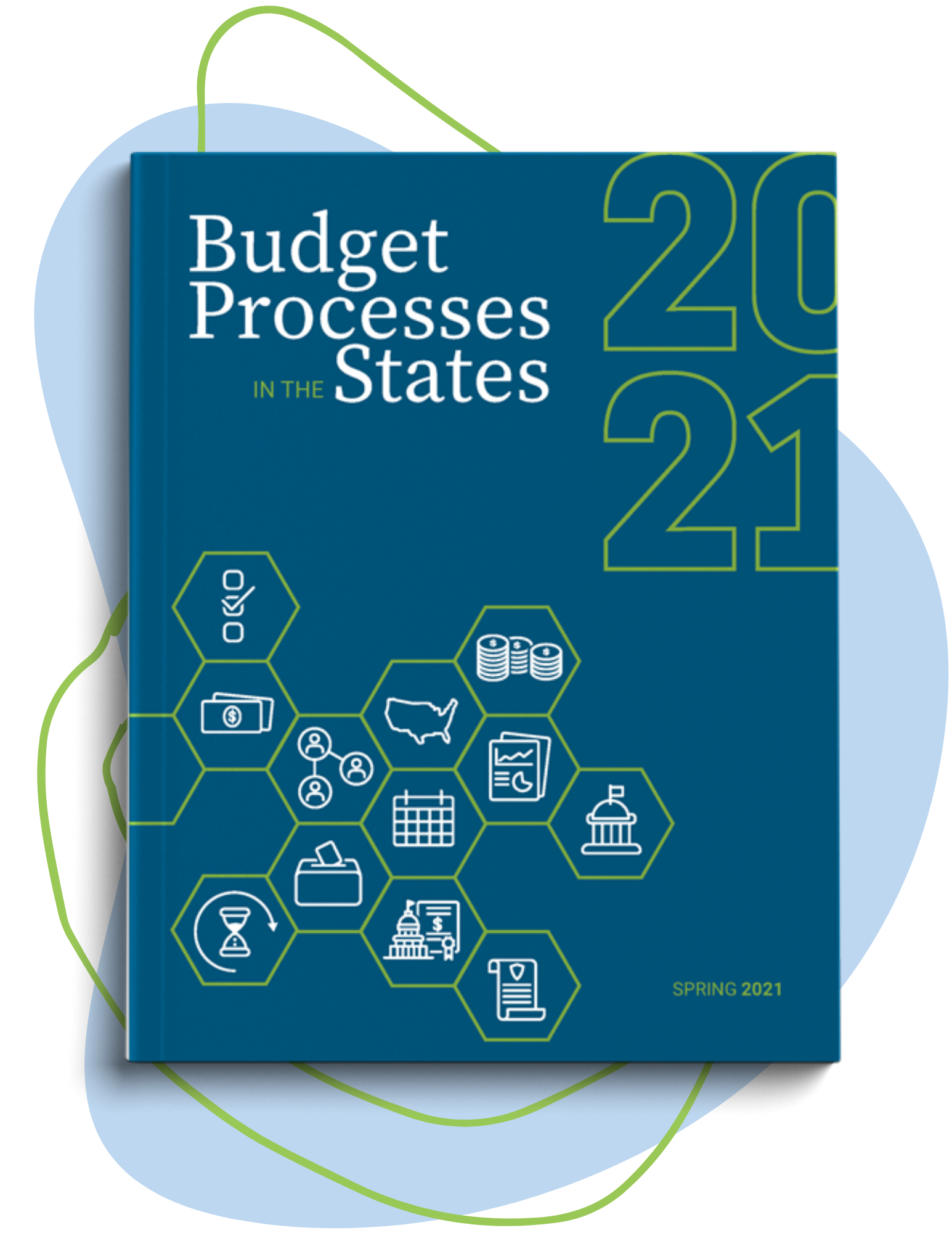 States’ budget processes, documented in NASBO’s 2021 edition of Budget Processes in the States released today, play a critical role in how spending and revenue decisions are made. Over the past year, various facets of the budget process helped drive how and when states took fiscal actions in response to the COVID-19 pandemic. Does a state budget on an annual or biennial basis? How frequently does the state release official revenue estimates? Does the executive branch have the authority to spend unanticipated federal funds without legislative approval? Can a state carry over a deficit under certain conditions? The answers to these questions and others are covered in NASBO’s latest report, and can help explain variations in the timing of and actors involved in states’ fiscal responses to COVID-19.
States’ budget processes, documented in NASBO’s 2021 edition of Budget Processes in the States released today, play a critical role in how spending and revenue decisions are made. Over the past year, various facets of the budget process helped drive how and when states took fiscal actions in response to the COVID-19 pandemic. Does a state budget on an annual or biennial basis? How frequently does the state release official revenue estimates? Does the executive branch have the authority to spend unanticipated federal funds without legislative approval? Can a state carry over a deficit under certain conditions? The answers to these questions and others are covered in NASBO’s latest report, and can help explain variations in the timing of and actors involved in states’ fiscal responses to COVID-19.
Indeed, as states across the country grappled with the pandemic’s impacts, numerous aspects of states’ budget processes were challenged in new ways. In the spring of 2020, many states had to adjourn their legislative sessions prematurely due to public health and safety concerns – forcing them to adjust their budget calendars and either expedite or postpone budget decisions. States’ revenue estimating abilities were tested beyond their limits, given the lack of reliable revenue projection models to build upon during the unprecedented and rapidly evolving economic conditions created by the pandemic. Federal stimulus funds provided to states to respond to the COVID-19 emergency and its economic impacts led to core budget process questions about the separation of powers between the executive and legislative branches and the budgetary treatment of federal funds. Nuances in states’ balanced budget requirements became especially important, as states wrestled with quickly changing revenue estimates and shifting tax deadlines. To manage their states’ budgets, a number of governors used their authority to withhold appropriations based on projected revenue shortfalls; veto certain line-item appropriations to reduce spending; impose hiring freezes and other personnel controls; tap reserves (usually requiring legislative approval); and transfer funds across programs to respond to unforeseen spending needs.
In this tumultuous and uncertain environment, state governments – and especially state budget offices – had to adapt quickly and take on new roles. In addition to managing the state’s own resources, governors, budget directors and their staffs had to make fast decisions – often in consultation with state lawmakers – on how to spend federal stimulus funds to support economic recovery and address novel public health needs. With the passage of the American Rescue Plan Act (ARPA) in 2021, these additional demands on state officials will continue, as will a heightened interest in states’ budget processes among various stakeholders. NASBO’s Budget Processes in the States report aims to promote a greater understanding of these processes, their variability across states, and how they have changed over time.
Read Budget Processes in the States Report